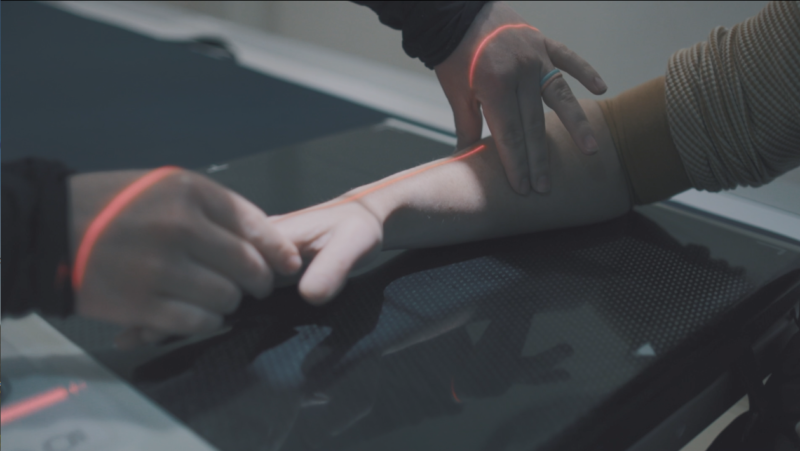
If your doctor has ordered an x-ray, you may be unsure what to expect from the experience. An x-ray is generally a quick and painless test that is used to produce images of the inside of your body. Your doctor will be able to examine what’s going on inside your body without making an incision. This can help them diagnose, monitor, and treat many different medical conditions.
What is an X-ray?
X-rays are a form of electromagnetic radiation that can penetrate and pass through the human body. X-rays are absorbed differently depending on the density of the materials they pass through. Dense materials like bone or metal will show up white on x-rays, while air in your lungs would show up black. Materials like fat and muscle often appear as shades of grey.
Orthopedic x-ray tests are crucial for assessing a wide range of musculoskeletal issues, including fractures, dislocations, joint degeneration, bone infections, and more. They provide detailed images of the bones and joints, allowing orthopedic specialists to identify abnormalities and plan appropriate interventions. Additionally, orthopedic x-ray tests are valuable for tracking the progress of treatments, such as the healing of fractures or the placement of orthopedic implants.
Who Needs an X-ray?
X-rays are commonly used to diagnose a wide range of medical conditions. They may be recommended for individuals experiencing symptoms such as unexplained pain, swelling, or discomfort. They are also essential for monitoring the progress of certain treatments or surgical procedures. Additionally, x-rays play a crucial role in routine screenings, such as mammograms for breast cancer detection or dental x-rays for assessing oral health.
At The Center, x-rays are recommended for individuals experiencing various musculoskeletal issues or injuries. Here are some common scenarios where an orthopedic x-ray may be necessary:
- Suspected Fractures: If a person experiences a sudden, severe pain after a fall, accident, or other traumatic event, an x-ray can confirm the presence and severity of a bone fracture.
- Joint Pain or Swelling: Persistent joint pain, swelling, or stiffness, especially after an injury or without an obvious cause, may require an x-ray to assess for possible joint damage, arthritis, or other conditions.
- Dislocations: When a joint becomes displaced, an x-ray can help determine the extent of the dislocation and guide in the proper reduction (realigning) of the joint.
- Chronic Pain or Limited Mobility: Individuals with chronic, unexplained pain or limited mobility in a specific joint may benefit from an x-ray to investigate underlying causes such as arthritis, degenerative joint disease, or other structural abnormalities.
- Sports Injuries: Athletes who sustain injuries during sports activities, especially those involving high-impact or contact sports, may require x-rays to assess for fractures, ligament injuries, or joint dislocations.
- Developmental Disorders: Children with suspected developmental hip dysplasia, scoliosis, or other congenital musculoskeletal conditions may undergo x-rays to evaluate bone development and alignment.
- Bone Infections or Tumors: X-rays can help identify signs of bone infections (osteomyelitis) or tumors within the musculoskeletal system, aiding in diagnosis and treatment planning.
- Post-Surgical Assessment: After orthopedic surgery, x-rays are commonly used to monitor the healing process, assess the position of implants or hardware, and ensure that the surgical site is stable.
- Follow-up after Trauma: After receiving initial treatment for a musculoskeletal injury, follow-up x-rays may be required to monitor healing progress and ensure there are no complications.
- Degenerative Conditions: Individuals with chronic conditions like osteoarthritis, rheumatoid arthritis, or other degenerative joint diseases may undergo x-rays periodically to track the progression of the disease and guide treatment decisions.
Types of X-Ray Tests
There are various types of x-rays, each tailored to specific areas of the body or medical concerns:
- General Radiography (Conventional X-rays): This is the most common type of x-ray, used to capture images of bones, organs, and tissues. It’s often used to diagnose fractures, infections, and lung conditions.
- Fluoroscopy: This type of x-ray provides real-time moving images of internal structures, commonly used during procedures like barium enemas, angiograms, and joint injections.
- Mammography: Specifically designed for breast imaging, mammograms help in the early detection of breast cancer.
- Computed Tomography (CT Scan): CT scans use a combination of x-rays and computer technology to create detailed cross-sectional images of the body. They are useful for examining soft tissues, blood vessels, and bones.
- Dental X-rays: These focus on capturing images of the teeth and jaw, aiding in the diagnosis of dental conditions and treatment planning.
- Bone Densitometry (DXA): This type of x-ray measures bone mineral density, often used to assess the risk of osteoporosis and fractures.
Here at The Center, x-rays are primarily used to examine an area where you are experiencing pain or discomfort, monitor the progression of a diagnosed disease (such as osteoporosis), or check the progress of how a prescribed treatment is working. X-rays are commonly used to look for conditions such as bone fractures, infections, arthritis, or osteoporosis.
Preparing for Your X-Ray
In most cases, there’s not much you need to do to prepare for your imaging exam. You may want to wear loose, comfortable clothing without any zippers, snaps, or metal grommets. It’s a good idea to leave jewelry or other metal objects at home, as you will likely be asked to remove them. Additionally, if there’s a possibility of pregnancy, it’s crucial to inform the radiologic technologist beforehand. This information is vital, as special precautions may be necessary during the procedure.
During Your X-Ray
Once you have arrived and checked in, one of our radiology assistants will escort you to an x-ray room. You may be asked to change into a gown or pair of exam shorts depending on what part of your body is being imaged. When you are ready, your x-ray technologist will help you position your body to take clear and specific images. They may ask you to sit, lie, or stand in several different positions to acquire the necessary images. You shouldn’t feel anything during an x-ray, though some of the positions may be a little uncomfortable after holding them for a duration of time. Your technologist will make sure you are as comfortable as possible, and move through the process as quickly as possible.
Your x-ray tech may use pillows or sandbags to help you hold positions easier. In some cases, such as spine x-rays or x-rays prior to a hip replacement, your x-ray technologist may have you stand in front of our specialized plate designed for long length images. It is important to stay as still as you can during the x-ray process to prevent blurry images. The procedure will be complete when your x-ray technologist is satisfied with the images gathered.
After Your X-Ray
When your x-ray is complete, you may generally return to your normal activities, depending on your condition and the reason for your x-ray. X-rays are saved digitally on computers, and your x-ray technologist will send all images to your doctor. Your doctor will review your x-rays and recommend treatment based on your results.
Interpreting your Results
After undergoing an x-ray, the next steps involve the evaluation of the images and any necessary follow-up actions. Here’s what you can expect:
- Result Evaluation: The images obtained during the x-ray will be carefully examined by a radiologist. They will analyze the images for any abnormalities, fractures, dislocations, or other relevant findings. This process may take some time, depending on the complexity of the images and the radiologist’s workload.
- Consultation with Healthcare Provider: Once the radiologist has reviewed the images, they will provide a detailed report to your referring provider. Your provider will then discuss the results with you. This consultation may take place in person or, in some cases, over the phone.
- Interpreting the Findings: During your consultation, your healthcare provider will explain the findings from the x-ray and what they mean for your health. They will discuss any diagnoses, recommendations, or treatment options that may be necessary based on the results.
- Treatment Recommendations: Depending on the findings, your provider may recommend various courses of action. This could include conservative treatments like rest, physical therapy, or the use of assistive devices. In more severe cases, surgical intervention or specialist referrals may be advised.
- Follow-up Tests or Imaging: In some situations, additional tests or imaging studies may be recommended to gather more information or to monitor the progress of a particular condition. This could include further x-rays, MRI scans, CT scans, or other specialized tests.
- Recovery and Rehabilitation: If the x-ray revealed a musculoskeletal issue, you may be provided with guidance on recovery and rehabilitation. This could involve exercises, stretches, or other interventions to promote healing and restore function.
- Long-term Care Plan: Depending on the nature of the condition, your provider will work with you to develop a long-term care plan. This plan may involve regular follow-up appointments, ongoing treatment, and lifestyle adjustments to manage your health effectively.
Receive information on living a healthy and pain free life from our providers by joining our monthly newsletter. Click below to sign up!





